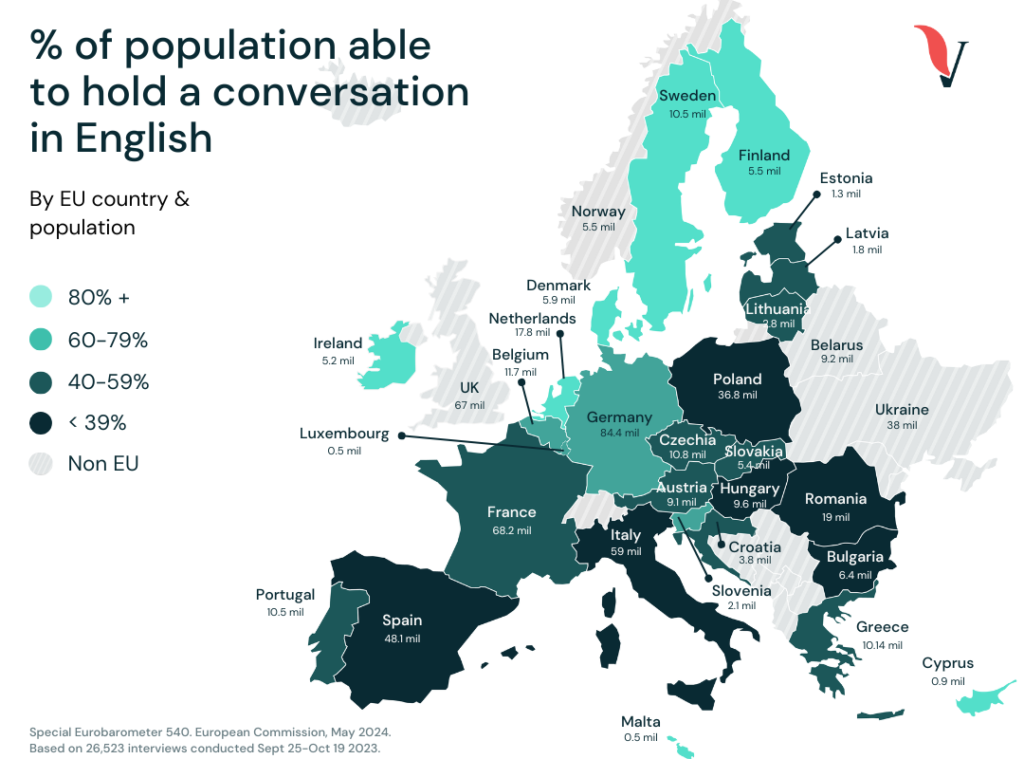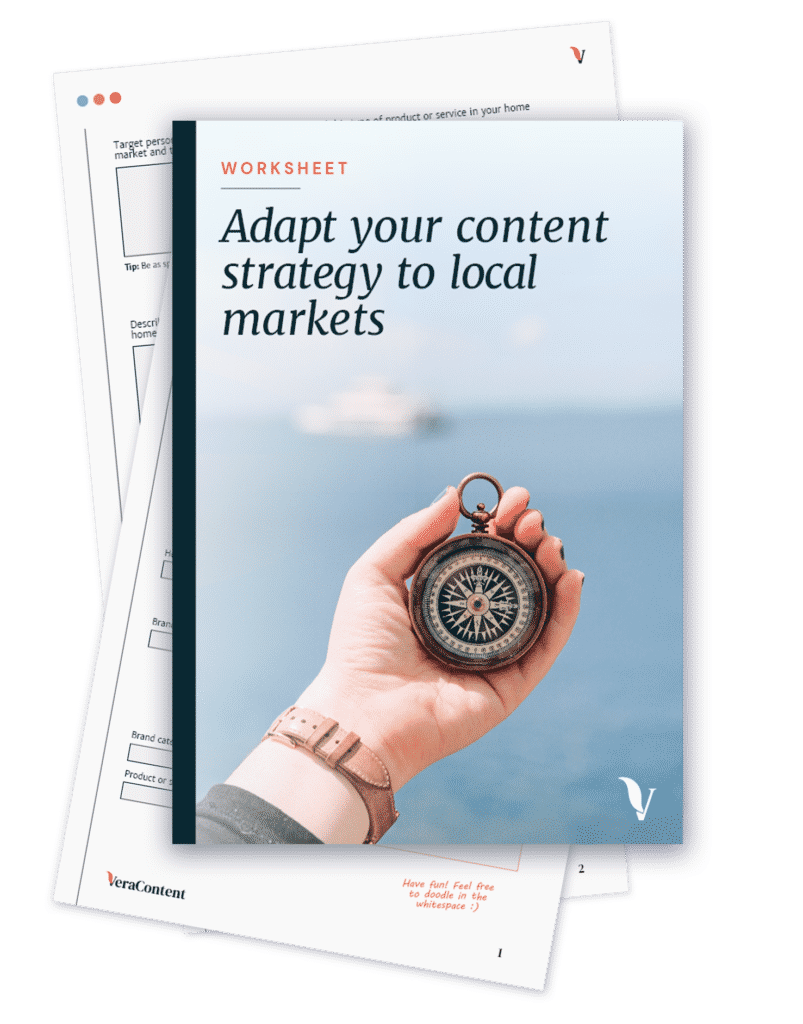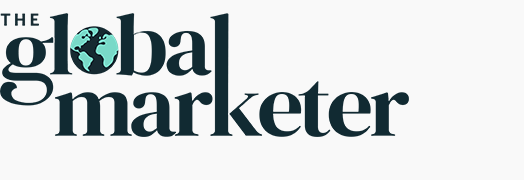Nordic digital marketing is gaining traction due to the strong economies, high incomes and widespread digital adoption in Denmark, Finland, Iceland, Norway and Sweden. These countries, collectively referred to as the “Nordics,” have well-connected populations with substantial purchasing power.
Given their exceptional English proficiency, targeting Nordic consumers in English is feasible. So, can you use English in Nordic digital marketing? And if you localize, do you have to localize to all languages, or can you pick just one? While the five countries speak different languages, they share many similarities.
Understanding the nuances of the Nordic market is crucial for effective marketing strategies. Explore tips, cultural insights and best practices to navigate this complex market successfully.
Here’s our recap:
Will Nordic countries understand English marketing material?
The Nordic countries have a very high level of English proficiency. As of the 2023 EPI, only the Netherlands, Singapore and Austria had higher average English-language skills among non-English-speaking countries. Their scores have remained consistently high since the study began in 2011. In addition, up to 90% of each population reports speaking English as a foreign language.
In fact, most Nordic people can understand English better than a neighboring Nordic language. While the five languages share many things, including vocabulary and sentence structure, they are not necessarily mutually intelligible. Danish, in particular, has a very different pronunciation style than Norwegian and Swedish, making it hard to understand.
In a 2021 Nordic Council study, young Nordics discussed language comprehension and communication methods with other Nordics. Most use a mix of Nordic languages and English. 59% primarily communicate in English.
95% of respondents said they understood English, and 62% said they understood either Swedish, Norwegian or both. However, only 26% said they understood Danish. In many situations in the Nordic countries, English is used as the primary language to ensure that things are communicated as accurately as possible. For example, pilots flying Nordic airlines must speak to each other in English.
Obviously, the Nordic countries are not a monolith, and levels of English comprehension can vary. Among the Nordic capital cities, Copenhagen consistently scores the highest in English skills and Stockholm the lowest. In addition, more rural areas, like Nordjylland in Denmark and Småland in Sweden, have a lower average level than most other areas, but not drastically so. People ages 20-30 tend to have the highest levels of English. People over 40 tend to have a lower level, but it’s increased in the last few years, and their level is still quite high.

So, if you use English in your Nordic digital marketing, will your customers understand it?
More than likely, they will. The Nordic countries, known for their strong English skills, use it as a lingua franca despite their closely related native languages.
Using English when targeting Nordic consumers as a whole is usually a better choice than choosing one of the Nordic languages to target the entire market. There’s a greater probability that your entire target audience will understand your messaging if it’s in English than Danish.
As always, knowing your target customers is essential for marketing your products. However, these guidelines also apply broadly across Nordic countries.

Is English the right choice for your Nordic digital marketing?
While we’ve already spoken about the Nordic countries’ high English levels, it’s important to note that everyone prefers content in their native language. In fact, 8 out of 10 Nordic consumers favor websites in their native language over English. They prefer brands that localize their websites and digital marketing.
Of course, in an ideal world, we would always localize and translate everything to every target market and have separate channels for each target language. But doing so can be expensive, and even more so in the Nordic market. Plus, the markets themselves, while lucrative, are much smaller than markets localized to German or Hindi.
So, if you’re just entering the Nordic market or have a limited budget, is using your English digital content okay?

If you have limited resources for each Nordic market, an English account with targeted ads and campaigns in each local language can be a good alternative. As we mentioned, the Nordic consumer usually has a strong grasp of English.
While there are some negative attitudes towards English or preferences towards native languages, in general, it’s appropriate to use English when targeting Nordic consumers. Our main suggestion is to ensure your English is straightforward and uses common words. Nordic people are much more receptive to English in advertising when they understand all the words. Keeping the language simpler avoids any potential miscommunication or misinterpretation issues.
If you can run separate campaigns in different Nordic countries, consider specific cultural factors in your digital marketing strategies:
Considerations for Sweden
- Collectivistic and consensus-oriented; they make decisions slowly
- They make tons of plans and follow them, and have detailed discussions before deciding on a final plan
- Holistic approach to decision-making
- Greater tendency to avoid conflict
- Team-oriented and inclusive
Considerations for Norway
- More impulsive and quicker to make decisions
- Able to adapt when unexpected things happen
- Very focused on their own region or community versus the country as a whole
- Most people speak in their own regional dialect (including the president) instead of “standard” Norwegian
- Very outdoorsy
Considerations for Denmark
- Very direct communication style
- Dry and ironic sense of humor, often make fun of each other
- The most laid-back of the Nordic countries
- Most open and talkative
- Very informal, even in business discussions
Considerations for Finland
- Honesty, punctuality, and equality are valued
- Informal communication style
- Value on individualism and privacy
- Appreciation for nature and sustainability
- Preference for high-quality and practically
Considerations for Iceland
- Strong sense of community and identity
- Environmental consciousness
- Innovative and open to new ideas
- Casual and informal communication
- Strong literacy and engagement with content
As you can see, local markets have vast language and cultural differences affecting your content strategy and brand positioning. Download our free worksheet to help your content team adapt your strategies to new markets:

A Nordic digital marketing case study from VeraContent
When PopSockets wanted to enter the Nordic market, they partnered with VeraContent to localize their digital marketing. Their marketing strategy prioritizes localized campaigns featuring local culture and slang. So, they knew they needed Nordic linguists’ help to ensure their campaigns appealed to their target audiences.
In 2023, PopSockets began collaborating with Pokémon on a line of phone grips and wanted to localize the campaign to the Nordic market and Finland. However, they weren’t sure whether to localize the names of Pokémon and catchphrases from the games, particularly since some Pokémon have the same name in Nordic languages and English.
Ultimately, they decided always to translate catchphrases in the Nordic markets and avoid English as much as possible, even if the English catchphrases were well-known. However, in the Finnish market, they used English marketing, as the TV show in Finland kept all the names and slogans in English.
Product names were kept in English for all markets, as PopSockets doesn’t translate product names at all.
Below are the website graphics for the Swedish, Norwegian and Finnish sites (in order).

Even though the English slogans are familiar to Nordic audiences, PopSockets still translated their digital marketing in those countries. English would have been appropriate and understood, but PopSockets knew that the Nordic audience would appreciate having localized content.
While the level of English is a bit lower in Finland, customers weren’t as concerned with localized content.
“In some markets, such as France, Pokémon names are translated completely to make sense to those audiences. However, in regions where English is prevalent and widely understood, retaining the original English catchphrases and vocabulary broadens the appeal to a wider audience.
Considering the product’s youthful demographic, familiarity with English slogans is common. Collaboration with Nordic and Finnish linguists was essential to determine the most suitable approach for PopSocket’s users.”
– Aurélie Berson, Project Manager at VeraContent
What is your best approach when targeting Nordic countries?
Entering a new market is always complicated, but one as lucrative as the Nordic market is more than worth it. It’s always our suggestion that you localize as much as you can, as people are more receptive to content in their own language. Sometimes, though, you don’t have the resources to do that. Thankfully, with the Nordic region’s strong grasp of English and consumption of English-language media, you can use English in your Nordic digital marketing.
If you’re still unsure about what decision to make or know you want to localize your digital marketing for the Nordic markets, we recommend working with a multilingual content marketing agency. They can help ensure your content works for your target audience and avoid any potential pitfalls and miscommunications.
Book a call with us today to see if you qualify for a Free Content Consultation!

